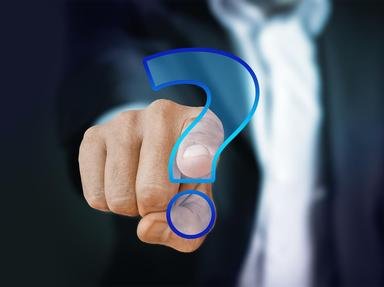Quiz Answer Key and Fun Facts
1. You know that the Magna Carta was signed by King John and English nobles in 1215 at Runnymede. But which of these items was included in the document?
2. Abraham Lincoln, the 16th US president, was shot by John Wilkes Booth in Ford's theater while watching the play "Our American Cousin". But what was the subject of this popular play?
3. Washington D.C. is the capital of the United States, and George Washington was its first president after the US Constitution was approved. But where was the U.S. seat of government when Washington first took office?
4. You now know that the Mohs scale measures the hardness of objects and that talc with a Mohs value of 1 is the softest and diamond with a value of 10 is the hardest. But what is the basis used to assign numbers on the Mohs scale measurement?
5. You know that Edmund Hillary and Tenzing Norgay made the first successful ascent and return on Mount Everest. Why was Hillary chosen to make the successful ascent?
6. The atomic bombs at Hiroshima and Nagasaki are well known. What city was the PLANNED target for the second bomb when the bomber took off?
7. OK, you probably know the first five books of the Old Testament of the Christian Bible (Genesis, Exodus, Leviticus, Numbers, and Deuteronomy). But what's the next book in the Old Testament?
8. You know about Napoleon, Arthur Wellesley, Waterloo, 1815, and the Duke of Wellington. But who was the general of the second army which defeated Napoleon, along with Wellington?
9. You know that 1666 was the year of the Great Fire of London, after which Christopher Wren rebuilt St, Paul's Cathedral, 57 London churches and other buildings. But where did the London fire start, according to most experts?
10. You probably know all of Henry VIII's wives - their names, courtships, and fates. But do you know which of Henry's wives had the shortest marriage to him?
Source: Author
SixShutouts66
This quiz was reviewed by FunTrivia editor
agony before going online.
Any errors found in FunTrivia content are routinely corrected through our feedback system.
